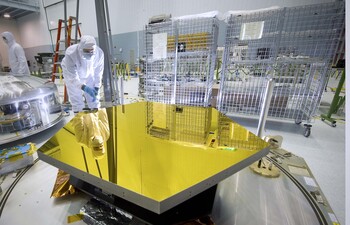In the realm of industrial cleaning and surface preparation, two prominent methods often stand out: dry ice blasting and sandblasting. Both techniques have their unique strengths and applications, making them suitable for different tasks. This article delves into the intricacies of dry ice blasting and sandblasting, comparing their processes, benefits, drawbacks, and typical uses to help you determine the best method for your needs.
What is Dry Ice Blasting?
Dry ice blasting, also known as CO2 blasting, is a cleaning method that uses dry ice pellets as the blasting medium. The process involves accelerating these pellets at high speeds using compressed air. Upon impact, the dry ice pellets sublimate, transitioning directly from a solid to a gas, which lifts contaminants off the surface without leaving any residue.
Benefits of Dry Ice Blasting
- Non-Abrasive Cleaning: Dry ice blasting is non-abrasive, meaning it cleans surfaces without damaging the underlying material. This makes it ideal for delicate surfaces and intricate machinery.
- No Secondary Waste: Since dry ice sublimates upon impact, it does not produce secondary waste. This reduces cleanup time and disposal costs.
- Environmentally Friendly: Dry ice is made from recycled CO2, making this method environmentally friendly. It does not contribute additional CO2 to the atmosphere.
- Effective on Various Contaminants: Dry ice blasting is effective at removing a wide range of contaminants, including grease, oil, adhesives, paints, and residues.
- Minimizes Downtime: As a dry process, it eliminates the need for drying time, which can significantly reduce downtime for machinery and equipment.
Drawbacks of Dry Ice Blasting
- Cost: The equipment and materials for dry ice blasting can be more expensive than those for traditional methods.
- Limited Abrasiveness: While non-abrasive, this can be a drawback for applications requiring heavy-duty removal of tough coatings or rust.
- Safety Concerns: Handling dry ice requires specific safety precautions due to the extremely cold temperatures and the risk of CO2 buildup in confined spaces.
 Typical Applications of Dry Ice Blasting
Typical Applications of Dry Ice Blasting
- Electrical Equipment Cleaning: Non-conductive and dry, making it ideal for electrical components.
- Food Industry: Removes contaminants without the use of chemicals, making it safe for food processing equipment.
- Automotive Industry: Cleans engines, molds, and other components without damaging them.
- Historical Restoration: Cleans delicate structures and artifacts without causing damage.
What is Sandblasting?
Sandblasting, also known as abrasive blasting, is a technique that uses abrasive materials propelled at high velocities to clean or etch a surface. Traditional sandblasting uses sand as the abrasive medium, though other materials like glass beads, aluminum oxide, and steel grit are also commonly used.
Benefits of Sandblasting
- Versatility: Sandblasting can be used on a wide range of materials, including metal, concrete, wood, and stone.
- Effectiveness: Highly effective at removing rust, paint, and other tough contaminants from surfaces.
- Surface Preparation: Ideal for preparing surfaces for painting, coating, or bonding by creating a rough texture that improves adhesion.
- Speed: Capable of cleaning large areas quickly, making it suitable for large-scale industrial applications.
Drawbacks of Sandblasting
- Abrasive Nature: The process is abrasive and can damage delicate surfaces or remove more material than intended.
- Secondary Waste: Generates a significant amount of secondary waste that requires cleanup and proper disposal.
- Health and Safety Risks: The dust and fine particles generated can pose health risks, necessitating the use of protective gear and proper ventilation.
- Environmental Concerns: Depending on the abrasive used, sandblasting can have environmental impacts due to dust and particulate emissions.
Typical Applications of Sandblasting
- Rust and Paint Removal: Effective for removing rust and old paint from metal surfaces.
- Surface Preparation: Prepares surfaces for painting, coating, or welding.
- Graffiti Removal: Removes graffiti from various surfaces, including concrete and brick.
- Construction and Renovation: Cleans and restores the appearance of buildings and structures.
Comparing Dry Ice Blasting and Sandblasting
- Effectiveness
- Dry Ice Blasting: Excellent for cleaning without damaging surfaces, ideal for sensitive or complex machinery.
- Sandblasting: Superior for removing heavy contaminants and preparing surfaces for further treatment.
- Cost:
- Dry Ice Blasting: Generally more expensive due to the cost of dry ice and specialized equipment.
- Sandblasting: Typically more cost-effective, especially for large-scale projects requiring heavy-duty cleaning.
- Environmental Impact
- Dry Ice Blasting: Environmentally friendly, as it does not produce secondary waste and uses recycled CO2.
- Sandblasting: Can have negative environmental impacts due to the production of dust and waste materials.
- Safety
- Dry Ice Blasting: Requires careful handling due to the cold temperatures and CO2 gas, but produces no dust.
- Sandblasting: Generates dust and requires extensive safety measures to protect workers from inhaling harmful particles.
- Cleanup
- Dry Ice Blasting: Minimal cleanup required as the dry ice sublimates.
- Sandblasting: Requires thorough cleanup of abrasive materials and removed contaminants.
Choosing the Right Method
The choice between dry ice blasting and sandblasting depends on several factors, including the nature of the surface to be cleaned, the type of contaminants, budget constraints, and environmental considerations.
-
Choose Dry Ice Blasting If
- You need a non-abrasive cleaning method.
- The surface is delicate or sensitive.
- Minimizing secondary waste is crucial.
- Environmental friendliness is a priority.
-
Choose Sandblasting If
- The surface is robust and can withstand abrasive cleaning.
- You need to remove heavy rust, paint, or other tough coatings.
- Cost is a significant concern.
- The project involves large-scale cleaning or surface preparation.
Conclusion
Both dry ice blasting and sandblasting have their places in industrial cleaning and surface preparation. By understanding their respective benefits and limitations, you can make an informed decision that aligns with your specific needs and goals. Whether you prioritize non-abrasive cleaning, environmental impact, or cost-effectiveness, choosing the right method will ensure optimal results for your project.


